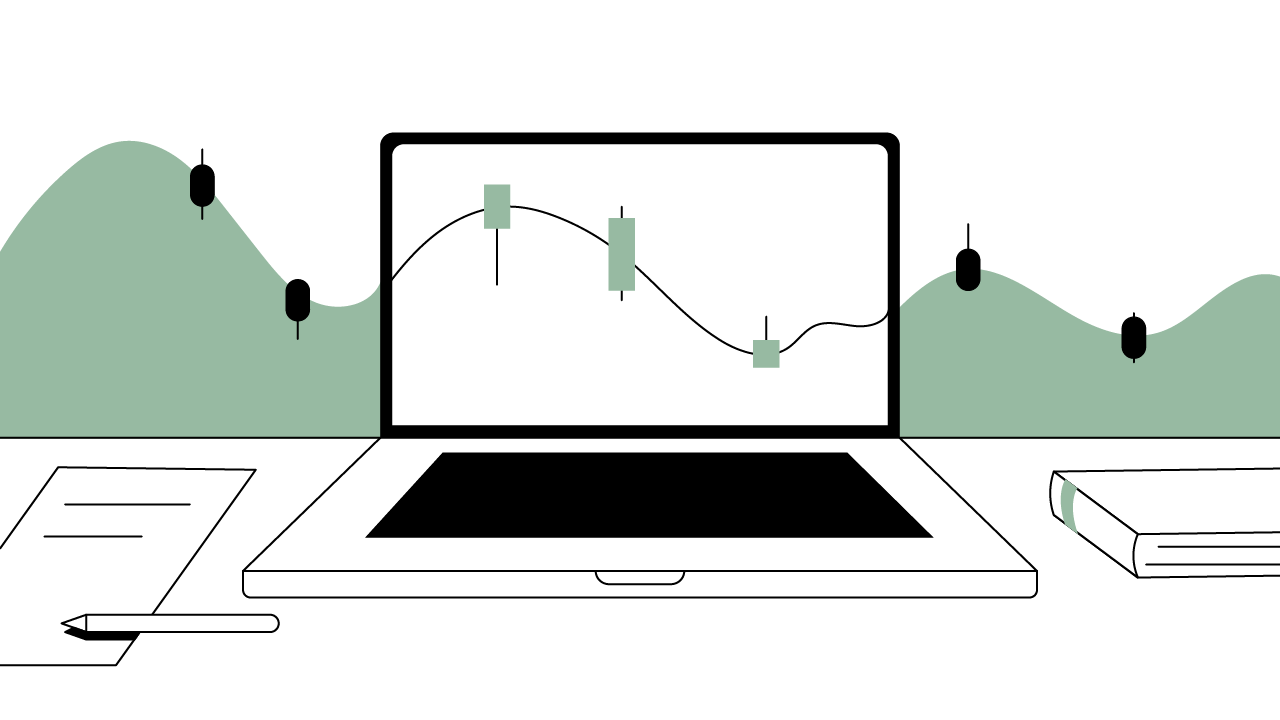Contents
Crypto Leverage Trading: What Is It, How It Works, and Strategies
Learn the basics of crypto leverage trading, including how it works, isolated vs. cross margin, and winning strategies with Gemini.
Updated February 26, 2025 • 5 min read

Summary
In this article, we’ll discuss the fundamentals of crypto leverage trading, compare isolated and cross-margin methods, explore common cryptocurrencies for leveraged trades, and give you some insights into the advantages and disadvantages.
Leverage trading has become a popular strategy in the cryptocurrency market, allowing traders to amplify their potential returns by borrowing funds.
With leverage trading, even a 5% market move can double your returns — or wipe out your position. This high-reward, high-risk strategy requires a solid understanding of margin dynamics, careful planning, and risk management to succeed.
Unlock the future of money on Gemini
Start your crypto journey in minutes on the trusted crypto-native finance platform
What Is Leverage Trading in Cryptocurrency?
Crypto leverage trading allows traders to borrow funds, enabling them to control positions much larger than their initial investment. By increasing exposure to market price movements, traders can achieve higher potential gains, which also significantly increases the risk of losses.
Platforms offer various leverage ratios, such as 2x leverage, 5x leverage, or even 100x leverage, allowing traders to choose based on their risk tolerance and trading goals. At the same time, this flexibility appeals to both short-term speculators and long-term investors, as well as effective risk management strategies to avoid significant financial setbacks.
Leverage Trading vs. Margin Trading
Leverage and margin trading are interrelated but serve distinct roles in cryptocurrency trading.
Leverage Trading: This strategy amplifies a trader's exposure to market price movements by using borrowed funds. It enables traders to take larger positions than their available capital would typically allow, enhancing both potential profits and losses.
Margin Trading: Margin trading involves using funds in your trading account as collateral to borrow additional capital. It is the foundation of leverage trading, as the borrowed funds provide the necessary leverage.
While margin trading prioritizes capital preservation through collateral management, leverage trading emphasizes maximizing returns by allowing traders to use leverage effectively in response to market movements. Understanding these nuances is crucial for tailoring strategies to specific trading goals and risk appetites.
What Are the Two Types of Leverage Trading?
Leverage trading employs two distinct approaches: isolated margin and cross margin.
These methods determine how collateral is managed and risks are allocated across trading pairs and position sizes to optimize trading strategies. Selecting the right approach depends on the trader’s goals, experience, and risk tolerance.
Isolated Margin
Isolated margin limits risk to the collateral allocated for a specific trade, ensuring that losses from one position do not impact the rest of the account balance. This makes it a preferred option for trading volatile assets or testing new strategies with limited risk exposure.
Advantages
Isolated margin has a few noteworthy benefits:
Ideal for beginners and traders managing multiple positions simultaneously.
Protects the rest of your account from being impacted by a poorly performing trade.
Encourages disciplined trading by limiting the funds at stake.
Disadvantages
That said, there are also a couple of potential downsides to be mindful of:
Requires active monitoring to prevent liquidation if the position's performance deteriorates.
Involves manual adjustments if additional collateral is needed to maintain the trade.
Isolated margin is ideal when trading highly volatile crypto assets or when testing new trading strategies. It’s also great for newer traders, who prefer limited exposure to risk per position.
Cross Margin
Cross margin combines the entire account balance as collateral to all positions, and profits in one trading can cover the losses made in another trading. Although this minimizes the likelihood of instant liquidation, it puts the entire account at risk of market price movements.
Advantages
When it comes to advantages, there are a few potential benefits:
Reduces the risk of liquidation by spreading potential losses across your entire account balance.
Allows traders to manage multiple open positions without worrying about insufficient collateral for each individual trade.
Maximizes the efficiency of account funds, especially for advanced trading strategies.
Disadvantages
That said, keep these potential disadvantages in mind, too:
Higher risk of losing the entire account balance if trades move significantly against you.
Requires greater expertise and active monitoring to avoid catastrophic losses.
This may lead to overleveraging if not managed carefully.
Generally, cross margin is best for experienced traders who understand market conditions can actively manage risk and employ strategies like futures contracts of leveraged tokens to diversify their portfolios. When trading multiple positions that can offset each other, it can reduce the overall exposure.
How Does Leverage Trading Work?
Crypto leverage trading involves these key steps to maximize returns and manage risk:
Deposit Collateral: Provide funds as a margin to secure borrowed capital for leveraged trades.
Choose Leverage Ratio: Select an appropriate leverage level (e.g., 5x or 10x) based on risk tolerance, trading experience, and objectives within the crypto market.
Open a Position: Enter a trade by combining margin with borrowed funds, magnifying market exposure.
Motor Margin Levels: Ensure that collateral stays above margin requirements to avoid margin calls or liquidation.
Use Risk Management Tools: Use stop-loss and take-profit orders to limit potential losses and lock in your gains.
These are just the basics, but these steps can help you better understand leverage trading if you’re just getting started.
What Is an Example of Leverage Trading?
Suppose you deposit $1,000 in your trading account and use 10x leverage to trade Bitcoin (BTC) in the spot trading or futures trading market. This gives you $10,000 worth of exposure to the market.
Profit Scenario:
If Bitcoin’s price rises by 5%, the position value increases to $10,5000. After deducting fees, you’ve earned $500 profit on your initial $1,000 deposit.
Loss Scenario:
If Bitcoin’s Price drops by 5%, your position loses $500. If the collateral cannot cover the loss, your account may face liquidation.
This example highlights the amplified risks and rewards of leverage trading, emphasizing the need for cautious planning and risk management.
What Are the Advantages of Leverage Trading?
With leverage trading, you can expect to see a few key advantages. Here’s a walkthrough of the main benefits:
Greater Purchasing Power
Leverage significantly increases a trader’s buying power, enabling them to take positions much larger than their available capital. This can lead to higher returns, particularly in volatile markets.
Flexibility
Leveraging allows traders to adopt various strategies, including long and short positions, to profit from both upward and downward price movements. It’s especially beneficial for short-term traders who rely on quick reactions to market volatility.
Short Positions
With leverage trading, you can profit from declines by taking a short position. For example, if Ethereum's price drops, a correctly executed short can yield profits, offsetting potential losses in other positions.
What Are the Disadvantages of Leverage Trading?
With that in mind, it’s also important to stay aware of potential downsides or risks. Here’s what to be mindful of:
Threat of Liquidation
The biggest risk of leverage trading is liquidation. If the market moves against your position and your collateral becomes insufficient to cover losses, the platform will liquidate your assets, potentially impacting your overall underlying asset holdings.
Limited Trading Pairs
Many platforms restrict leverage trading to popular pairs like BTC/USDT. This limits opportunities for diversification across less common pairs.
Additional Fees
Traders pay fees for borrowing funds, including interest and trading fees. Over time, these costs can erode profitability, especially in high-leverage trades.
What Are Common Cryptocurrencies for Leverage Trading?
Although there is nothing specifically superior about any token for leverage trading, popular tokens are owing to their volatility, high trading volume, and adoption. The section briefly describes the most common tokens used to carry out crypto leverage trading and their match with leveraged trading.
Bitcoin (BTC)
Bitcoin is the biggest and most known cryptocurrency in the market. Due to its high liquidity and market share, it is the best crypto product for applying leverage trading. BTC serves long and short trading positions because of this market demand pattern and frequent price movements.
Bitcoin’s market cap is high and has lower fluctuations than many other tokens. Therefore, it is preferred for leveraged positions. However, price fluctuation allows traders to make high-leverage positions.
It is suitable for the trading strategy that targets medium-term price patterns and is an important component when covering risks using stop-loss orders.
Ethereum
Ethereum is the second-largest cryptocurrency and serves as the backbone for decentralized applications (dApps) and blockchain ecosystems.
The token's frequent price swings and strong association with decentralized finance (DeFi) projects make it highly appealing for leveraged trades. Traders often pair ETH with stablecoins like USDT for balanced positions.
Ethereum is particularly suited for traders who want exposure to innovative markets like DeFi and NFTs while leveraging substantial liquidity.
Tether (USDT)
Tether is a stablecoin pegged to the US dollar (USD), offering a safe haven in volatile market conditions. While not used for speculative price gains, it plays a crucial role in leverage trading strategies.
Traders frequently hold positions in USDT to minimize risks while accessing leveraged trades in other cryptocurrencies. This stability ensures that traders are not affected by unexpected price movements during market downturns.
Tether’s stability makes it important for managing collateral and minimizing exposure to market fluctuations in leveraged positions.
USD Coin
Similar to Tether, the USD coin is a stablecoin that provides transparency and reliability. It is fully backed by reserves and is often considered one of the safest options for traders seeking a stable collateral base.
USDC is commonly used in margin trading and collateral strategies. Its transparency and regulatory compliance offer peace of mind for traders engaging in high-risk leverage trading.
Its stability is ideal for creating a risk-buffered trading strategy, particularly when paired with volatile assets like BTC or ETH.
By understanding the unique characteristics of these tokens, traders can better align their crypto leverage strategies with their goals, whether it’s minimizing risks or maximizing opportunities in the crypto market.
Wrapping Up
Crypto leverage trading offers the possibility of increasing the result, but it is also associated with certain risk management. Using features like stop-loss orders and planning for margin trading in advance, traders can easily avoid the most common pitfalls and tools like a crypto credit card can further enhance their trading experience by earning crypto rewards on everyday purchases.
Are you willing to take your trading to the next level? Learn how Gemini’s trading platform can give you the confidence to use leverage and improve your trading approaches.
Cryptopedia does not guarantee the reliability of the Site content and shall not be held liable for any errors, omissions, or inaccuracies. The opinions and views expressed in any Cryptopedia article are solely those of the author(s) and do not reflect the opinions of Gemini or its management. The information provided on the Site is for informational purposes only, and it does not constitute an endorsement of any of the products and services discussed or investment, financial, or trading advice. A qualified professional should be consulted prior to making financial decisions. Please visit our Cryptopedia Site Policy to learn more.

Is this article helpful?


